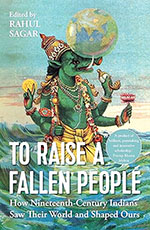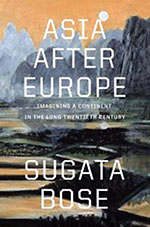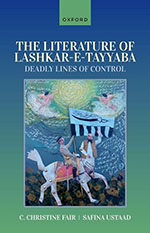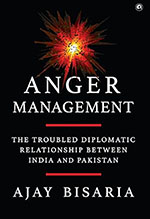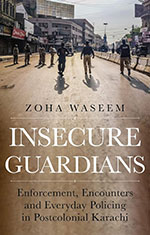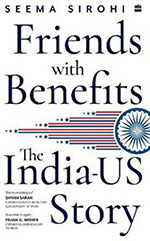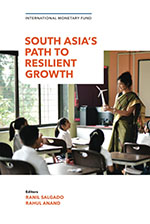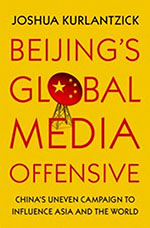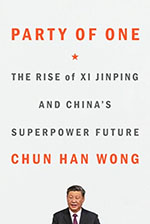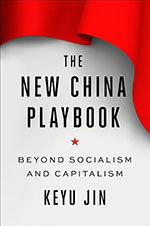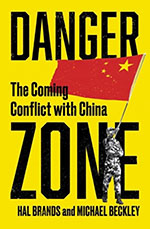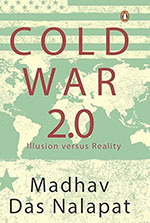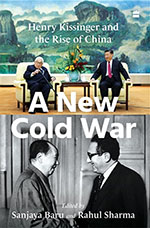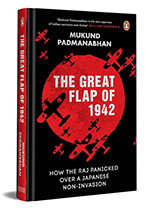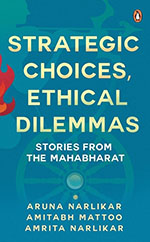International Relations
In the interconnected web of global politics, the dynamics of International Relations wield significant influence in shaping the trajectory of nations and regions. However, in today’s global landscape, disorder prevails as established rules and norms of International Relations are frequently disregarded.
Western views are not universally valid, and this liberal way of thinking divides countries in an imperialist manner into ‘good’ democratic and ‘bad’ autocratic ones and thus creates defensive reactions, says Carlo Masala, Professor, International Politics at the Bundeswehr University, Munich
As a young man, Raja Ram Mohun Roy saw his bewildered and wailing 17-year-old, widowed sister-in-law pushed into her husband’s funeral pyre, which made him a lifelong campaigner against the practice of sati, idolatry, and obscurantist rituals.
The section highlights the fact that instead of searching for causes of Asia’s descent into poverty in the acquisition of wealth by European powers, we should try to understand the manner in which the colonial powers manipulated the ‘intra-Asian connections’
The titles of the works included in this compilation are in themselves revealing of the LeT, its mindset and equally of its priorities: ‘Why are We Waging Jihad’; ‘In Defence of Jihad’; ‘The Mujahid’s Call’; ‘We the Mothers of the Lashkar’
Former Indian High Commissioner to Pakistan (2017-20), Ajay Bisaria has written an engaging book, an easy read, despite 500+ pages of text.
Policing in postcolonial South Asian countries has been a complex mix of legacies from the colonial era, local traditions and the freedom struggle. Post Independence, they had to deal with the mammoth task of reforming and transforming their policing institutions.
The book explores the dynamics of Indo-US relationship in the post-Cold War context. In this endeavour, it has a detailed discussion of the core issues, the major challenges and the mutual perceptions the two countries possess towards each another.
Mukarji gives a lot of space to the role of Commander Ahmad Shah Massoud, a man of Tajik descent, a minority group in a country of Pashtun majority, who led the Northern Alliance consisting of other minority groups in fighting the Soviet occupation. As he claims: ‘If you want to know the best part of Afghanistan’s recent history
In the aftermath of the COVID-19 pandemic, Salgado and Anand have attempted to craft a digitalized and green route for resilient growth by identifying the potential demographic dividend in South Asia and pushing for more significant trade and financial openness.
‘Developing states, and particularly those in Africa, Southeast Asia, and parts of Eastern Europe, are some of the most vulnerable to the growing influence of Xinhua, since they have few restrictions on content-sharing deals,
Despite being at the helm of affairs in China for more than 12 years now, Xi Jinping is still somewhat of an enigma for the world and may be even for a large number of people within China.
Keyu Jin attempts to dispel notions that China’s functioning resembles some form of state Capitalism. She brings out that while ‘Public Sector type of companies’ undoubtedly dominate several sectors of the economy, they are not necessarily in themselves the principal growth engines.
China’s growing assertiveness in the last two decades, its ‘wolf warrior’ diplomacy under Xi Jinping’s leadership, rapidly expanding coercive power
‘In the dark times, will there also be singing? Yes, there will also be singing. About the dark times.’ These famous lines by Bertolt Brecht aptly fit Scott Ezell’s epic Journey to the End of the Empire: On the Road in Eastern Tibet.
The book is an epic work of forty chapters each with its own quintessence. ‘The Ghost of Chamdo’, ‘March Winds’, ‘Wind and Wildfire’, ‘Memory Songs of Lhasa’, ‘Four Rivers Six Ranges’, ‘Silent Struggle’ and many more are worthy of mention.
The central argument that Professor Madhav Das Nalapat makes in his timely book is that the new Cold War, which he terms as Cold War 2.0 is different from the earlier Cold War and that it would be a mistake to assume that the Soviet Union has been replaced with the Russian Federation.
As foreign policy cum security experts, academicians and politicians try to understand the current international order and what shape it may take, Sanjaya Baru and Rahul Sharma have brought together 19 essays in their first edition (2021) to coincide with the 50th anniversary of US President Nixon’s historic visit to China in 1971.
We are living in the post-pandemic era having fresh memories of evacuation, lockdown, information, and disinformation—overall a situation of panic.
The Ramayana and the Mahabharata are not just two great epics but also great treasures of our civilizational heritage that have inspired generations over many centuries.



